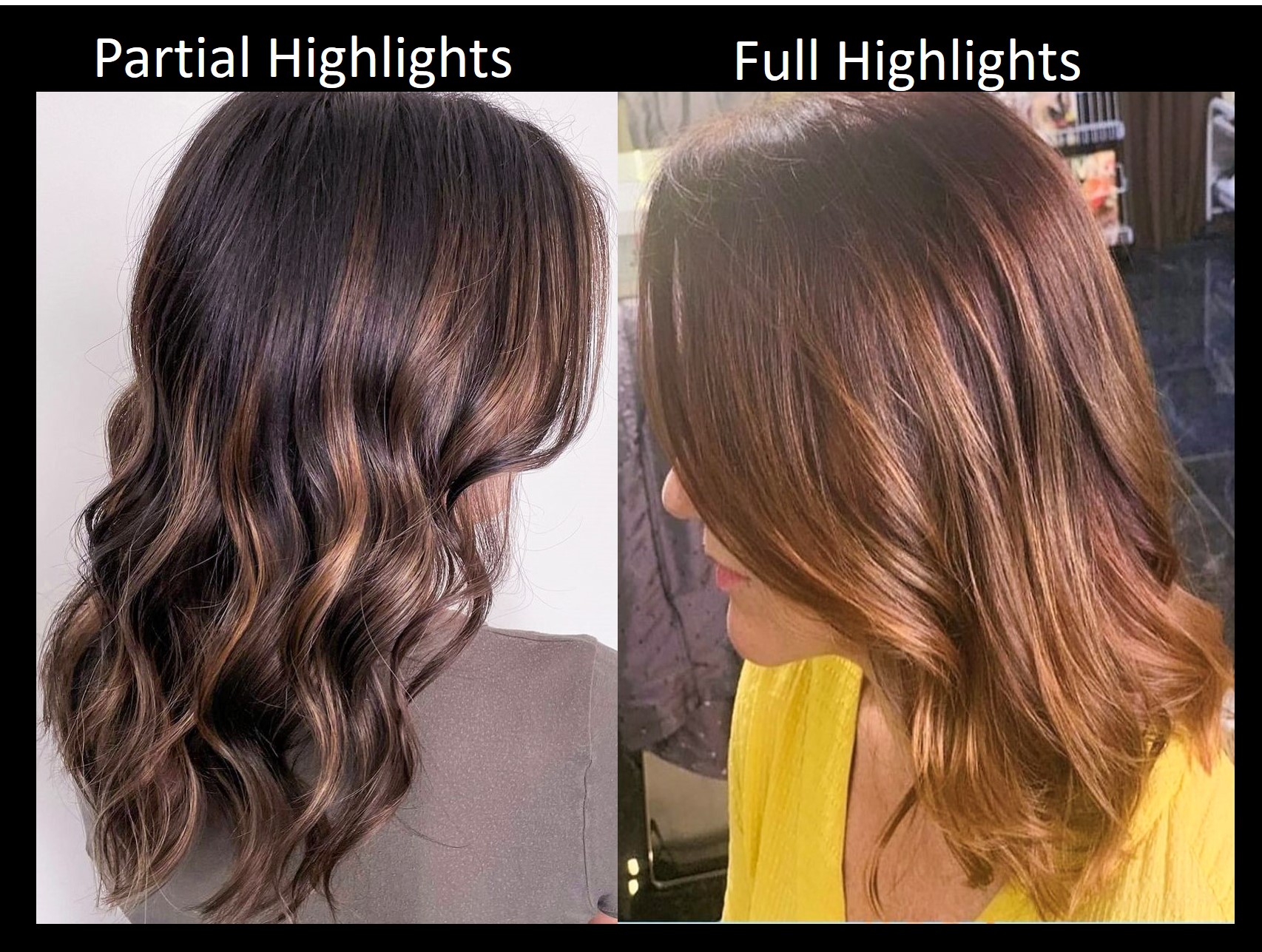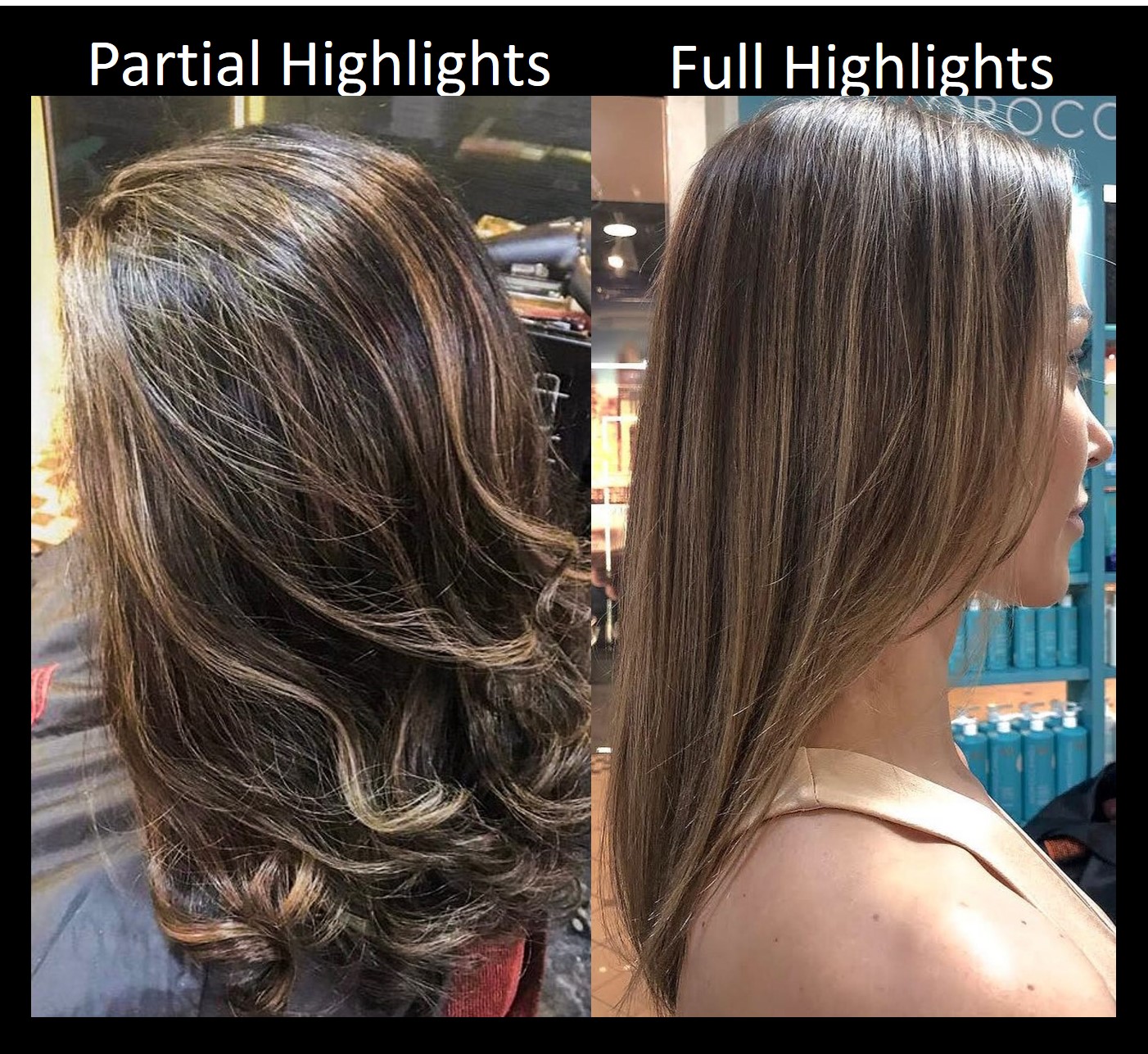You probably don’t know there are partial and full highlights unless you are a professional hairdresser or a regular at a salon. If you do, congratulations! We hear “highlights” most of the times. What is the difference between partial highlights and full highlights? How do you know the difference between full and partial highlights? We’ll show you how to differentiate between partial and full highlights and how to achieve each look, and help you decide which one is right for your needs especially if you have budget or time concerns (hint: it may be both!).
| Partial Highlights | Full Highlights |
| Apply it to a specific area of your hair; it can be applied to the sides, the top or the mohawk section, or front of your hair, based on the hair goals you’re hoping to get; not often visible, particularly when you alter your hair colour. | Apply to your entire head, including the strands underneath and on the surface of your hair, starting at the nape to the hair line. It is visible even if your hairstyle changes. |
| It is used to imitate closely the natural effect how the sun lightens hair. It can also be used as a way to “highlight” or draw attention to your features as well as giving your hair a very flowy texture. | Can be used to lighten or darken hair very slightly. It can also enhance hair texture and dimension. It will result in a dramatic look particularly when all over highlights is done on the whole head. |
| They are usually more affordable and the service takes lesser time. Also partial highlights is much lower maintenance. | But they require more time and can be more costly as well as higher maintenance. |
What’s the difference between partial or full highlights?
The biggest difference is that partial highlights only apply to certain areas of your hair (top, sides, backs, ends, etc.). Full highlights apply all over your head, from the hairline to the nape (including the hair underneath), while partial highlights only cover certain areas of your head. Unlike full highlights, partial highlights can be unknowingly concealed by styling your hair differently.
Partial highlights have a natural and subtle look that is more subtle than full highlights as the base colour of the hair is not changed. Partial highlights may give your hair a sun-kissed, tropical look or can make the texture appears more flowy. You can draw attention to specific features on your face and hair. Full highlights on the other side have more dramatic and intense effects, especially if the base hair colour has been changed and will result in more natural-looking texture and dimension. You can use them to give your hair a bold look, especially if you have done an all-over colour change such as if you’re a natural blonde who wants to go brunette for a while. Partial highlights application takes much lesser time and is more affordable than full highlights. It is often cheaper than full highlights in all the hair salons.
We will be comparing all the aspects of partial and full highlights for the different perennial go-to hair colours in our salons. We will show you the different photos on how partial or full highlights turned out and added different touches to our clients hair based on on the range of popular colour trends in Hera Hair Beauty.
Sandy Blonde (Partial vs Full)

Credit: Hera Hair Beauty
Sandy blondes are a warm, rich hair colour. They have dark skin, and can be described as having blue, hazel, or violet-coloured eyes. The dark blonde base and cool beige highlights create a lovely, sandy blonde colour that gradually fades into lighter tones. The sunlit highlights of the sandy base provide a great illumination for the entire face. Partial highlights is just parts or sections of the head being lightened (normally placement near the face to achieve a lightening effect) whereas a full highlight focus on lightening every section of your hair.
Golden Blonde Hair (Partial vs Full)

Credit: Hera Hair Beauty
There are two types of molten-gold hair: one is the golden blonde, and another is the cascading golden locks. The multidimensional look of golden blonde, which is a combination of butter, honey and gold, looks great. It looks best with light complexions and hazel or pale blue eyes. The hair appears sun-kissed when balayage is used. For those who want to go from dark to light without, full highlights are a great option as compared to partial.
Honey Blonde (Partial vs Full)

Credit: Hera Hair Beauty
A honey blonde colour has a warm, inviting look. It is best for medium-to-dark skin. A honey blonde highlight will also work well with darker roots.
It is the best shade of summer, thus can even add warmth to your look in the cooler months. Natural colour elevation is possible due to the yellow brown highlights. As compared to partial highlights, the hair will look more textured and dimensional with full highlights.
Copper Blonde (Partial vs Full)

Credit: Hera Hair Beauty
Copper blonde, a light and luminous colour, has amber undertones. Copper blonde is one beautiful shade of blonde. It looks fantastic with dark skin, and even darker eyes. It doesn’t appear brassy at all, and it plays an important role in the natural hair colour of those with darker complexions.
Caramel Blonde hair (Partial vs Full)

Credit: Hera Hair Beauty
Caramel is a favorite of many. We mean it! The caramel colour of hair is equally warm and delectable. This shade looks particularly lovely on dark skin tones. It’s a natural colour for your hair, especially if you are born with darker brunettes. The best look is achieved by using a dark golden base and pale highlights around your face. The skin glows with the final product.
Bronde Hair (Partial vs Full)

Credit: Hera Hair Beauty
Blonde with brown is a natural, warm hair colour. It looks rich and beautiful with cooler buttery highlights. Bronde is great with medium and light skin tones. It also looks great with eye colours with gold flecks, light brown, or blue. This is a dark ash brown hue that looks similar to dirty blonde but has a darker overall appearance.
Chocolate Blonde (Partial vs Full)

Credit: Hera Hair Beauty
We’re talking about a darker shade caramel here. This chocolate blonde colour looks stunning when accented with golden highlights evolving from a dark brown base. This blonde colouring works best with darker skin tones, and darker eyes. However it can be made lighter to suit all complexions. It is important not to mix blonde with white, platinum, and orange locks.
The Takeaway
Partial highlights can be a great option for those who don’t want too much regrowth or don’t have the time to manage their hair. This is also a great option for those prefer lesser upkeep highlights (e.g., warmer colours) and who aren’t afraid of a little bit of root. Some blonde clients alternate between the two. They go with full highlights every 2nd appointment.
It’s time for a full highlight if the back of the hair at the neck starts to look dark from a ponytail. They will want colour to be everywhere for a cohesive style and can choose to grow out depending on the colour they prefer. Full highlights tend to be more complicated and require more care. However, it’s perfectly acceptable to keep your hair looking fresh with full highlights.
Colourists agree that interchanging your highlights and spacing out them can help to maintain hair integrity. This will allow for different sections to breathe and heal, particularly for those with long hair. After three times of partials, probably time to have a full–unless your desire to continue the depth beneath.You can probably consider to get a partial if your gap at the root is small and the top still covers the dark part of the back of the head. If you have enough partials, your colourist may recommend a full highlight.
Most people don’t know how to book for what, so it is up to the colourists to educate them about the maintenance required to maintain the look. Finding the right colourist that understands foiling, free handing or adjusts to work within it is key. Final highlighting decisions are not required to be made prior to scheduling an appointment. If you are unsure, a good colourist is open to full consultation. There will also be room for adjustments on-the-day.


Leave A Comment